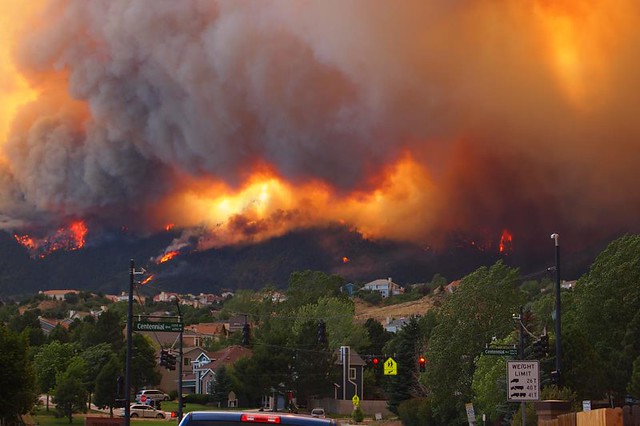When purchasing a house, location can make all the difference. Knowing exactly where houses are located becomes even more important when a wildfire is burning.
“Precise home locations are very important when sending out warnings and evacuating residents,” said Dapeng Li, an assistant professor of geographic information science in the Department of Geography and Geospatial Sciences at South Dakota State University. He uses computer modeling and maps to help emergency managers make decisions about when they need to evacuate residents during a wildfire. The modeling takes into account not only how fast the fire spreads, but also how much time residents need to get to a safe place.
“Home locations help us generate evacuation travel demand to compute how much time is needed for residents to evacuate,” Li said. He and researchers from the universities of Maryland, North Texas and Utah evaluated how a national address database with geographical coordinates, known as address point data, will impact wildfire public safety. Their work is available online and will be published in the October 2019 International Journal of Disaster Risk and Reduction.
The United States does not have a comprehensive nationwide address database, Li explained. However, the U.S. Department of Transportation is collaborating with state, local and tribal agencies to compile a reliable dataset for an open-access national address database. As of May 14, 2019, the USDOT had received address data from 23 state partners.
By describing how the national address point data can facilitate wildfire evacuation research and practices, the geospatial scientists show how valuable the database is as well as provide feedback to improve the database.
“We can point out what kind of data we need,” said Li, who hopes other researchers will follow his lead. “The applications for this database could be huge.” However, he emphasized the importance of regularly updating the address point data.
A second open-access address point database with information on the United States is OpenAddresses, hosted on Github. Statistics on the global OpenAddresses website show 27 states have complete land area coverage and 25 states have “substantial coverage” based on Federal Information Processing Standard coding for counties.
However, Li said, “The use of crowdsourcing to gather information makes this very different from the government database.” In the article, the researchers point out gaps and overlaps that “restrict the direct use of this dataset in many applications.”
Mapping fire-prone communities, modeling evacuation
“If I have a well-maintained national address point database, I can pull data for any area in the United States,” Li said. “That is important when a hazard, such as a wildfire, crosses political borders.”
Li and his collaborators focus on dwellings built in or adjacent to wildlands, known as the wildland urban interface, with areas classified based on housing density and spatial configuration in relation to the wildland area. “A fine-grain dataset of house locations helps us identify fire-prone communities more precisely,” he said.
“If we know the average vehicle ownership rate, we can estimate evacuation travel demand,” he said. With this data, Li and his collaborators can generate more accurate evacuation traffic simulations.
Warning residents, tracking losses
Combining the fire parameter and house location data, emergency managers or incident commanders can “draw a polygon to identify which homes should be evacuated.” The officials could post the maps on websites or social media, so residents could see whether their homes are in the warning zone. “It is very straightforward,” he added.
Using the Aug. 11, 2018, Vineyard Fire near Hot Springs, Li points to a map that shows a single home on the far northeast corner of the evacuation zone. “If we don’t have this kind of data, we could very easily miss that outlying home when we do warnings, which could be a disaster,” he said.
Furthermore, warnings and evacuation notices as well as information on the condition of homes in the fire zone could be made available through web map applications. Evacuees waiting in shelters could use the app to find out when and if they are able to return to their homes, he explained. In California, for instance, the wildfire evacuation practitioners have started to use address point data in the web map apps for house loss assessment and notifications in wildfires.
An open-access national address database is also especially useful to insurance companies, Li pointed out. “In the Waldo Canyon Fire in Colorado, approximately 300 homes were lost, but in California fires, thousands of homes were lost.” This data can help insurance adjusters track damage and actuaries calculate risk for disaster-prone areas.
“We cannot keep people from building in the woods,” he said, but the national address point data could help reduce the number of lives lost in a wildfire.
